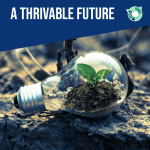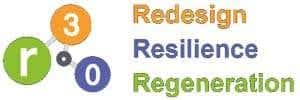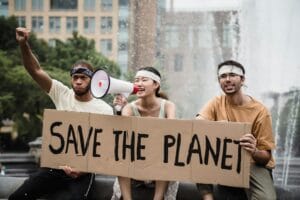Introduction
In the global shift toward a regenerative future, thrivability reframes sustainability, not as preservation, but as regeneration. This article explores how clean technologies transform industries, such as electric vehicles (EVs), solar, and Direct Lithium Extraction (DLE), alongside circular strategies like battery and solar panel recycling. These innovations advance renewable energy, cut emissions, restore ecosystems, and support resilient, inclusive economies.
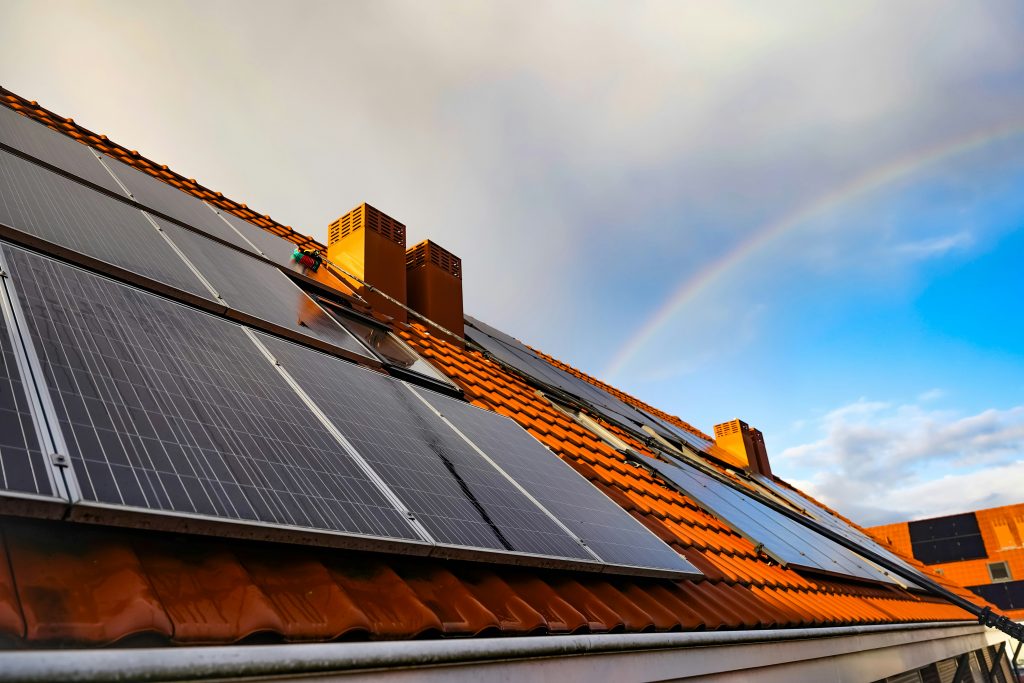
Source: unsplash.com
Definition
A regenerative future restores ecosystems, strengthens communities, and renews the natural systems all life depends on. It emphasises resilience, interdependence, and long-term renewal. Energy, materials, and relationships circulate regeneratively. This vision aligns with The THRIVE Framework, especially the principle of a Regenerative Economy, one that creates value by restoring rather than extracting.
Methods for Achieving Thrivability: Clean Technologies and Circular Resources
Clean Technologies for a Regenerative Economy: Catalysts for Renewable Transformation
Clean technologies are reshaping energy systems and infrastructure worldwide. Nations like China, Germany, the US, and others investing in solar, electric vehicles, and renewables are accelerating energy transitions and influencing global markets (Mirza et al., 2024). Institutions like the Clean Energy Finance Corporation in Australia, the Kreditanstalt fuer Wiederaufbau in Germany, and the Green Investment Bank in the UK help de-risk innovation, catalysing early-stage projects and unlocking private investment (Fareniuk, 2024). In 2023, global investment in renewable energy and power grid infrastructure reached over USD $1.2 trillion, surpassing fossil fuel investment (around USD $1.1 trillion) for the first time (Shi & Zhao, 2025). This growth supports climate goals and inclusive economic transformation and innovation (Zhou et al., 2023).
Importantly, the integration of clean technologies must be rooted in the principles of Strong Sustainability, a Foundational Focus Factor (FFF) of The THRIVE Framework. Rather than assuming that human-made solutions can replace ecological functions, Strong Sustainability recognises that natural capital is critical, non-substitutable, and must be preserved in its own right. It prioritises the primacy of environmental systems and underscores the importance of remaining within planetary boundaries. As a result, technological innovation must do more than simply reduce emissions; it must also support the integrity, stability, and resilience of the biosphere. Ultimately, development should strengthen, rather than undermine, the life-support systems upon which all thriving depends.
Circular Resources: Closing the Loop for a Regenerative Future
Circular resource strategies are essential to a Regenerative Economy. They reduce waste, secure materials, and extend the life of clean technologies (Kaliyannan et al., 2025). Two urgent areas, battery recycling and solar panel recovery, illustrate the shift from disposal to regeneration.
Lithium-Ion Battery Recycling
The rise of electric transport and grid-scale storage is expected to generate over 12 million tonnes of lithium-ion battery (LIB) waste by 2030 (Wu et al., 2023). If unmanaged, it risks soil and water contamination. Advanced recycling recovers lithium, cobalt, and nickel, reducing pollution and securing critical resources. Direct recycling improves efficiency by repurposing materials with minimal processing (Wojciech et al., 2021). The market value of recycled energy transition minerals is projected to increase fivefold, reaching USD $200 billion by 2050 (Buisson et al., 2024).
Photovoltaic Solar Panel Recycling
As solar installations expand globally, solar panel waste could exceed 78 million tonnes by 2050 (Yu et al., 2024). Without proper recycling infrastructure, these materials risk becoming an environmental liability. Current recycling targets only basic modules and many regions lack infrastructure for modern PV systems. Next-generation recycling is needed to recover rare materials and close the loop (Quinto et al., 2025).
Recycling is a cornerstone of the circular economy, keeping valuable materials in circulation and minimising the demand for new extraction.
Industry Transformation in a Regenerative Future: Clean Technologies and Circular Economy in Practice
As the global economy shifts toward a regenerative future, clean technologies and circular systems are doing more than cutting carbon emissions. More importantly, they are redefining how industries function, transforming supply chains, business models, and capital flows in the process. This transformation is increasingly guided by the principle of Values-Based Innovation. It calls for solutions that support ecological integrity, build long-term resilience, and enhance societal well-being, not just short-term performance or profit. Here’s how key industries are evolving:
Sustainable Lithium Extraction: Unlocking Clean Energy Storage for a Regenerative Future
Direct Lithium Extraction (DLE) extracts lithium directly from brine using advanced technologies like ion exchange and membranes. Unlike traditional mining, DLE slashes water usage by up to 90% and reduces land disruption (SLB, 2023). It enables brine reinjection, preserving local ecosystems and accelerating project timelines, while improving ESG compliance and attracting green finance (Petavratzi et al., 2022). This values-aligned innovation is central to building a circular and regenerative materials economy (Jayanthi et al., 2023).
While DLE reduces water consumption and accelerates lithium recovery compared to traditional methods, it nonetheless remains resource- and energy-intensive, especially when applied to complex sources such as geothermal brines (Sun et al., 2025). This is because the process requires energy for fluid pumping, sorbent regeneration, and managing interfering ions, which means its overall efficiency falls short of 100%. As a result, any sustainability claims must be backed by comprehensive lifecycle assessments that fully account for all material and energy inputs in relation to the environmental and energy benefits of the lithium produced.
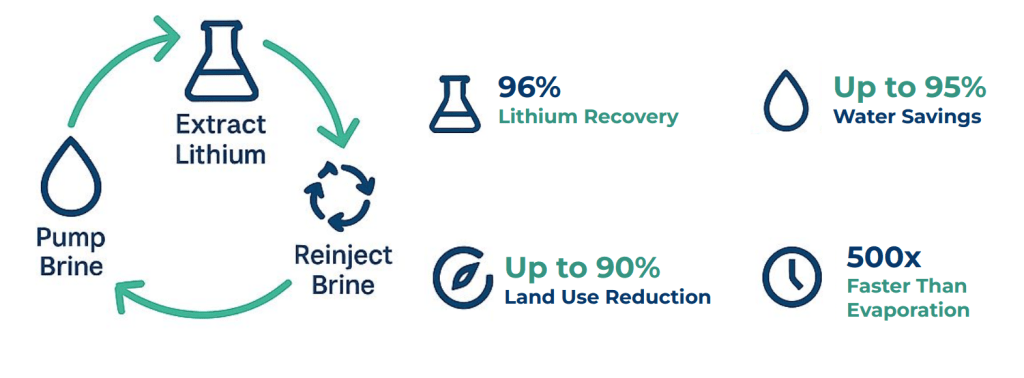
Source: THRIVE Project
Renewable Energy Systems and Solar Power Innovation: Foundations of a Regenerative Energy Transition
The renewable energy sector, particularly solar power, is central to the clean transition. In 2023, global clean energy investment exceeded USD $1.7 trillion, with solar power surpassing fossil fuels for the first time (IEA, 2023). Meanwhile, decentralised energy, via rooftop systems and microgrids, is empowering communities (Abdelbary et al., 2024). At the same time, hybrid systems integrating wind, solar, storage, and AI-based smart grids are building a flexible, zero-emissions power backbone (Wen et al., 2024). Moreover, circular materials and solar panel recycling support the sector’s decarbonisation goals and contribute to reducing environmental impacts. Although not fully regenerative, these practices represent incremental progress toward more sustainable and resource-efficient systems (Ramírez-Cantero et al., 2025).
Electric Vehicles and Battery Circularity: Clean Mobility in the Regenerative Economy
Electric Vehicles (EVs) are more than just low-emission vehicles, they’re active components in circular energy systems. Tesla, Redwood Materials, and CATL are leading closed-loop battery recycling (Tesla, 2023). In addition, second-life batteries are powering homes and grids (Colarullo et al., 2022). Furthermore, vehicle-to-grid (V2G) systems allow EVs to send energy back to local networks, helping balance renewable supply (Mojumder et al., 2022). This expanding EV ecosystem demonstrates a clear shift toward extended product lifecycles, energy flexibility, and material reuse.
Although battery and panel recycling cannot eliminate waste, it nevertheless represents a vital step toward regeneration, marking a shift from extractive, linear systems toward circular models that prioritise material recovery, reduce environmental harm, and support the transition to a cleaner, more resilient energy system.

Source: unsplash.com
Petroleum Diversification and Green Transition: Reinventing Fossil Sectors for a Regenerative Future
Major oil and gas companies are beginning to diversify into renewable energy, hydrogen, and biofuels (Cherepovitsyn et al., 2023). For instance, oil giants like BP, Shell, and Saudi Aramco are redirecting investment and infrastructure from fossil operations to clean sectors, responding to investor pressure and climate regulation (BP, 2023). This shift reflects a major reallocation of capital, skills, and infrastructure for a post-carbon economy (Vinci, 2025). Consequently, traditional energy actors are repositioning themselves as contributors to a regenerative future, where energy systems are aligned with climate goals and long-term ecological viability (AG Abo-Khalil, 2024).
Why Thrivability Matters: The Role of sustainability in Climate Action
Thrivability reframes sustainability—not as maintenance, but as regeneration. It positions climate action within a systems approach that restores natural capital, reduces risk, and builds inclusive prosperity. By applying Integral Thinking, it ensures these solutions address environmental, social, economic, and cultural factors together, avoiding fragmented or one-dimensional strategies. Here’s how Strong Sustainability serves as a cornerstone of climate action:
- Emissions mitigation: Renewables, carbon capture, and energy efficiency are foundational to net-zero pathways (Nirupama et al., 2025).
- Adaptation: Nature-based solutions and resilient infrastructure prepare societies for climate shocks (Boateng et al., 2023).
- Circular design: Product life cycles are extended, waste becomes input, and emissions are minimised (L Shee Weng, 2024).
- Finance: Green finance channels capital into transformative solutions (Liu et al., 2024).
- Equity: A just transition ensures marginalised communities benefit from the green economy (S Arun, 2024).
Yet, despite growing momentum, key challenges persist:
- Infrastructure Gaps: Many regions still lack effective recycling systems for batteries and solar panels (Preet & Smith, 2024).
- Policy Lag: Regulatory frameworks often trail behind rapid innovation (H Jain, 2024).
- Equity Gaps: Benefits of the transition remain uneven, risking new vulnerabilities for underrepresented communities (N Luke, 2023).
- Market Risk: Fossil incumbents are slow to shift, creating the danger of stranded assets and delayed transformation (Heras & Gupta, 2023).
Thrivability offers a solution, not by avoiding these tensions, but by integrating action across sectors to build systems that are regenerative, inclusive, and built to last.
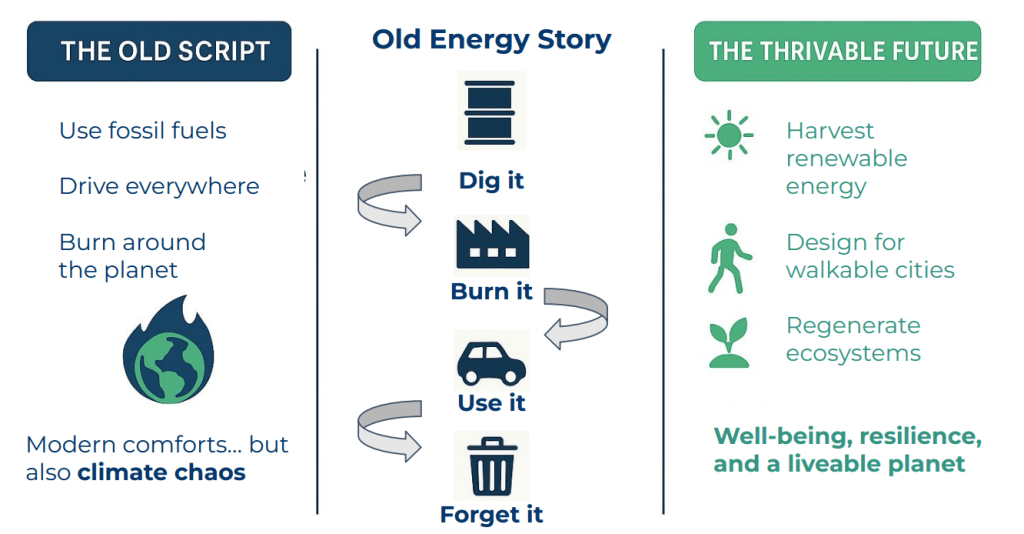
Source: THRIVE Project
Case Studies: Real-World Examples of Thrivability in Action
While thrivability may sound abstract, many organisations and initiatives are already adopting its principles. Across energy, mobility, and urban planning, these examples reflect a shift from sustainability as maintenance toward a model of regeneration, resilience, and abundance.
- In the clean energy sector, U.S.-based company SolarCycle has developed a high-efficiency system to recover valuable metals from end-of-life solar panels, transforming what was once waste into new inputs for manufacturing (SolarCycle, 2024). This not only reduces environmental impact but helps establish a circular solar economy.
- In the realm of mobility, Tesla’s battery recycling program closes the loop on critical materials. By recovering lithium, cobalt, and nickel from used cells, the company reduces the need for virgin mining while improving resource efficiency in its gigafactories (Naor, 2022).
- On the extraction frontier, EnergyX employs advanced Direct Lithium Extraction (DLE) to recover lithium from brine more efficiently and with significantly less environmental impact than traditional methods. This approach enhances both ecological integrity and scalability (EnergyX, 2023).
- Even within traditional sectors, progress is taking shape. Companies like TotalEnergies and Equinor are strategically transitioning from fossil fuel dependency to diversified clean energy portfolios, positioning themselves as leaders in the renewable transformation (Mailhol, 2022).
These case studies demonstrate that thrivability is not theoretical, it is being implemented across industries and landscapes, redefining success through regeneration, equity, and long-term value creation.
What Can Be Done: Strategic Actions for Building a Regenerative Circular Economy
Creating a regenerative, circular economy requires more than innovation—it demands a systemic redesign of how we produce, consume, and restore value. Clean energy solutions like solar, wind, and storage must be scaled to decarbonise energy systems and increase resilience (Mangal, 2025). Circular resource flows, through reuse, recycle, and repair, are essential to minimise waste and reduce dependency on virgin materials. Technologies such as Direct Lithium Extraction (DLE) support sustainable sourcing, while petroleum diversification shifts investment into renewables and green fuels. Regenerating ecosystems through reforestation, biodiversity corridors, and urban greening strengthens climate resilience and supports community well-being.
To be truly regenerative and thrivable, systems must go beyond net zero to net positive. In other words, simply returning what has been taken from the planet is not sufficient. Instead, efforts must focus on preserving and enhancing Earth’s capacity to deliver ongoing benefits for future generations. Achieving this requires implementing solutions that actively restore natural capital, strengthen ecological functions, and foster long-term resilience across environmental, social, and economic systems.
This transition depends on collaboration: policymakers must shape bold frameworks, businesses must invest in circular design, and communities must lead with local action. Together, these efforts build a future where economies thrive in balance with nature.
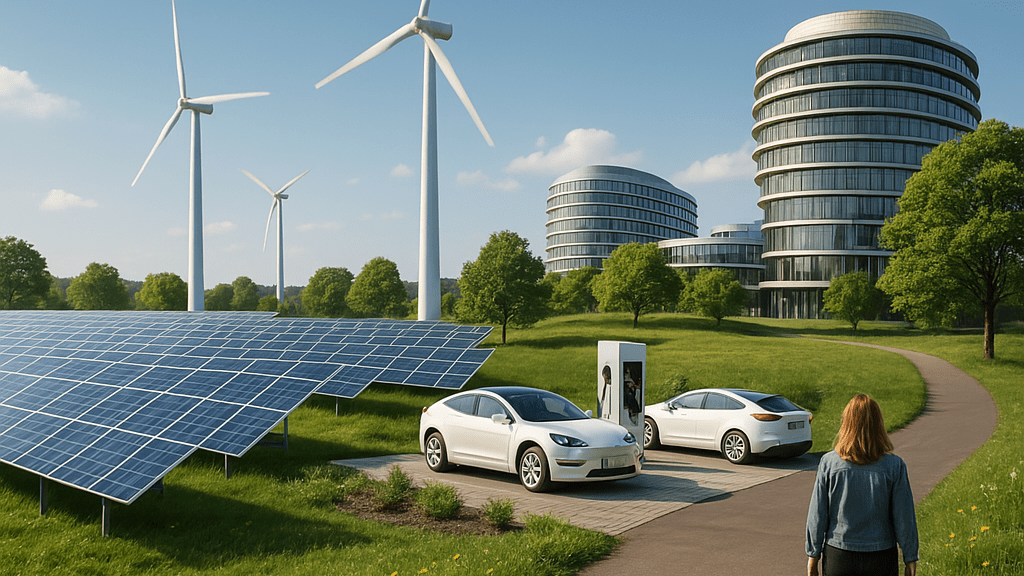
Source: AI-generated by THRIVE Project with OpenAI
Conclusion and Call to Action
The shift to a regenerative future is not just a technological challenge—it’s a societal opportunity. By integrating clean technologies and circular resource systems into every sector of the economy, we can create societies that are resilient, inclusive, and ecologically aligned. This is more than sustainability, it’s thrivability. It means restoring ecosystems, empowering communities, and designing economies that work with, not against, the planet.
Each of us has a role to play. Whether as policymakers, innovators, business leaders, or everyday citizens, we can support this transition by choosing circular products, advocating for regenerative policies, and investing in solutions that prioritise long-term well-being.
Act now: support clean technologies, practice circular living, champion regenerative systems. Let’s build a future where humanity thrives in harmony with nature.
Achieving Thrive Project themes goals and SDGs
Transitioning to a regenerative and circular economy directly supports and goes beyond the United Nations’ Sustainable Development Goals (SDGs) by advancing inclusive growth, ecological restoration, and climate resilience. For example, clean energy investments advance SDG7: Affordable and Clean Energy, while circular systems such as battery recycling and sustainable manufacturing address SDG12: Responsible Consumption and Production. Likewise, low-carbon innovation and green infrastructure foster SDG9: Industry, Innovation and Infrastructure, and initiatives like direct lithium extraction reform and urban reforestation contribute to SDG13: Climate Action and SDG15: Life on Land by restoring ecosystems, reducing emissions and going beyond just maintenance to regeneration or thrivability.
This transition also reflects The THRIVE Framework, which embeds Systems Thinking into how societies produce, consume, and sustain life. The theme of Strategies: Production & Consumption is evident in circular technologies that regenerate value and reduce waste. Climate Action: Mitigation & Adaptation is addressed through decarbonisation and climate-resilient practices. Infrastructure: Thrivable Living comes to life in energy systems and resource flows designed for equity, resilience, and long-term well-being.
Rather than isolated fixes, these goals and themes represent a unified approach where production, climate strategy, and infrastructure evolve together to build a regenerative, thrivable future.
A Thrivable Framework
Thrivability moves beyond harm reduction to regeneration. Grounded in the THRIVE Framework, it offers a Science-Based path for designing solutions that enhance both human and ecological well-being. At its core is Values-Based Innovation, developing technologies that prioritise equity, community empowerment, and long-term impact over short-term gains. Whether in solar, mobility, or resource extraction, innovation must serve people and planet alike. Strong Sustainability reinforces this by acknowledging that natural systems are finite. Circularity isn’t enough if it hides environmental trade-offs. True sustainability respects planetary limits and demands transparency and accountability. A Regenerative Economy redefines progress. It favors circular material flows, local ownership, and business models that restore ecosystems, from lithium sourcing that preserves aquifers to decentralised energy that empowers communities.
More than a framework, thrivability is a global movement. THRIVE Project connects researchers, innovators, and citizens working toward regenerative futures. Through ongoing publications, curated research, and active newsletters, the community shares insights and strategies grounded in systemic thinking. THRIVE’s Webinars bring together diverse voices committed to transforming sustainability into something more holistic, inclusive, and actionable. Join the movement. Build a future that thrives.





